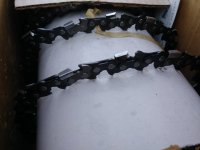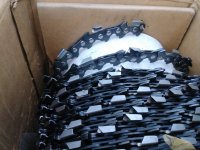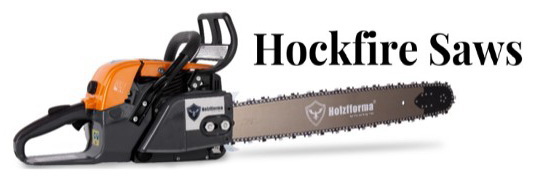Is that considered a bumper link? If so, is it really that bad?
*The photo above appears to be a
bumper drive link chain, like the first photo below. The low-kickback bumper is part of the drive link. There are several variations, but in general, the bumper aligns with the depth gauge and 'presents itself' when the chain moves around the nose of the guide bar.
Most users find that this cuts fine, when properly sharpened, although, it might be slightly slower in bore cutting. I have seen experienced operators win informal races with this type of chain.

*note that the EXCEL chain pictured also has
dual depth gauges, which is not common, but not unheard of: it has been used on some other chains through the years.
This photo is a
bumper tie-strap chain. The low-kickback bumper is part of the tie strap. This was one of the first low-kickback designs, and the type that some people make fun of as 'safety chain'. It will still cut your leg off.
Again, this chain cuts fine, when properly sharpened, although, it might be slightly slower in general cutting as well as bore cutting. Because the bumpers fill in the 'gaps' between the cutters, it is not as good at clearing chips, which can be an issue on larger logs (greater than 24"?). But it provides a smoother cut on smaller limbs and branches, which makes it a nice choice for limbing and pole saws.

Are all low kickback chains made with bumper links or is that something else?
Most low kickback chains fall into one of the general categories above. There is the exception of the Oregon 'Vanguard' chain with its unique depth gauge (photo below).

Bottom lines:
- All of these chains will cut well in general use if properly sharpened.
- Some guys blame their poor understanding of, or skill at, sharpening on 'safety chains'.
- Regardless of appearance, the chain has to pass a performance test to be labeled as 'low-kickback' or 'reduced kickback' chain.
Philbert















